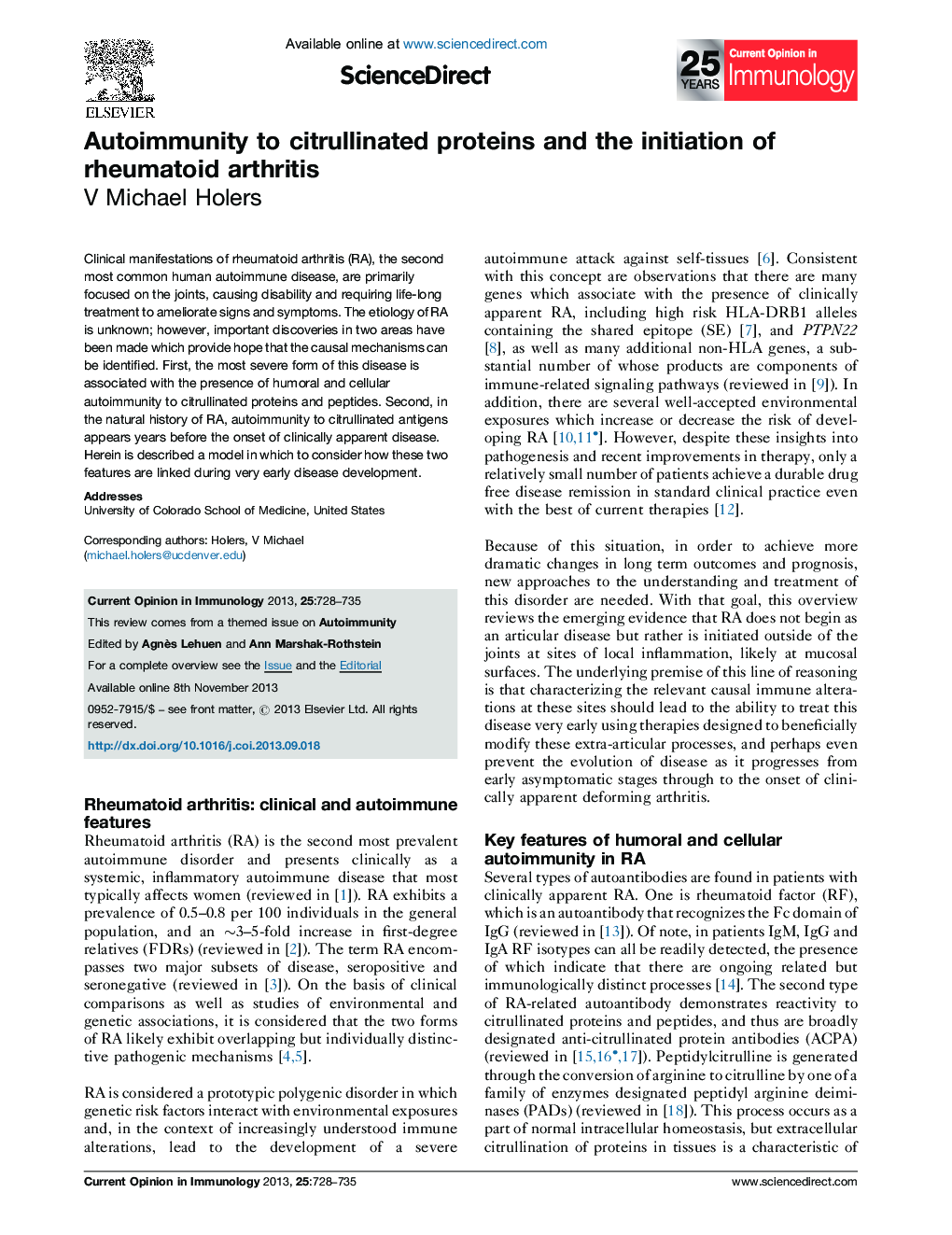| کد مقاله | کد نشریه | سال انتشار | مقاله انگلیسی | نسخه تمام متن |
|---|---|---|---|---|
| 3345870 | 1215751 | 2013 | 8 صفحه PDF | دانلود رایگان |

• RA exhibits a long preclinical period with autoantibodies and other biomarkers.
• Highly specific preclinical autoimmunity to citrullinated antigens develops early.
• RA appears to be initiated by processes outside of the joints.
• Inflammation at mucosal sites may drive the early phases of RA development.
Clinical manifestations of rheumatoid arthritis (RA), the second most common human autoimmune disease, are primarily focused on the joints, causing disability and requiring life-long treatment to ameliorate signs and symptoms. The etiology of RA is unknown; however, important discoveries in two areas have been made which provide hope that the causal mechanisms can be identified. First, the most severe form of this disease is associated with the presence of humoral and cellular autoimmunity to citrullinated proteins and peptides. Second, in the natural history of RA, autoimmunity to citrullinated antigens appears years before the onset of clinically apparent disease. Herein is described a model in which to consider how these two features are linked during very early disease development.
Journal: Current Opinion in Immunology - Volume 25, Issue 6, December 2013, Pages 728–735